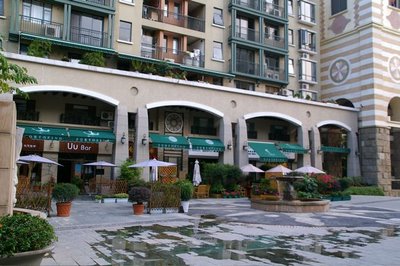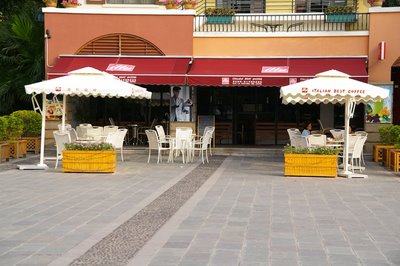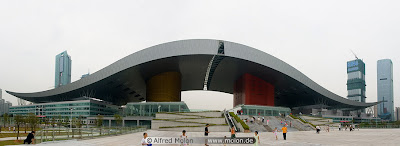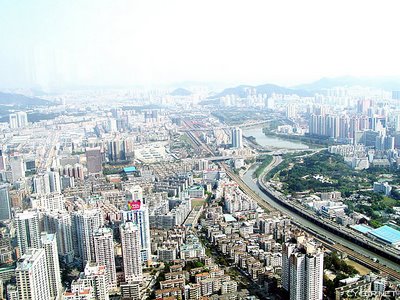City Rankings: Safe, Slow, Delicious or Cantankerous?
Planetizen plans to release a plain-speaking ranking of planning programs soon, based on both objective and subjective data. (Update: Their “Guide to Graduate Urban Planning Programs” was released November 1, with the “top 10 overall” summarized here.) At the same time, ACSP launched an ongoing investigation into “planning school assessment,” which will be discussed at an ACSP conference roundtable in Fort Worth at 8:30am Thursday, Nov. 9. Each has raised concerns among some planning faculty, not least because our departments diverge in a good number of respects, many not particularly related to quality or quantity. A few worry it would be a bit like ranking cereal, where your own experience may vary. (Others wonder if it wouldn’t be more like ranking Canadian beers, which I find taste pretty similar after the first 5 or 6 bottles.)
Meanwhile, cities, the object of our professional affections, have long been subject to rankings galore. To keep things brief and on point here, I am going to ignore most of that interesting literature and start sort of from scratch. (If you want to think more about these issues, I don’t advise you do the same. Instead, you might start with, “Quality of life and environmental comparisons,” by Gyourko, Kahn and Tracy in V.3 of the Handbook of Regional and Urban Economics, 1999.)
My fair city of Irvine — blog-researched here — tends to do very well, ranking wise, for obvious reasons. Things are going just swell, superficially. Take safety, please. Based on FBI data on police department initial reports of violent crimes such as murder, rape, robbery and aggravated assault, Irvine was calculated by a local paper to be the safest city over 100,000 in the USA in 2005. Somehow by the time similar data were analyzed by another source, it dropped to number 2, after Amherst, NY (a suburb of Buffalo). But Irvine has 185,000 residents as compared to Amherst’s 116,00, and zero snow, so let’s agree that by some meaningful yet arbitrary measure it is the safest city with less than 10 feet of snow over 150,000, by a long shot.
Plus the schools are excellent, weather fantastic, infrastructure magnificent…. Why doesn’t everyone mobile move here?
Much like cereal and Canadian beer, we ration cities largely by price (plus wages). (Planning programs, by contrast, are mostly rationed by their yes/no admissions process.) Another answer is that not everyone wants to live here, controlling for cost. Safety, weather and schools all matter greatly, certainly. But it’s otherwise nondescript, banal, and culture-less. So we probably could use a better quality of life measure. What about food?
Slow Food
Trying to stay awake on a transcontinental trip a couple of years back, I finally resorted to the unappetizing sounding in-flight film, Supersize Me. It was surprisingly entertaining and informative. I checked out the DVD when home for the family. Thereafter, my 11-year old announced he was henceforth boycotting McDonalds because they used genetically-modified potatoes. Both still are. (As for myself, I admit to dropping by only when a matter of life or death.)
We haven’t discussed this yet but he would be quite at home with the “Slow Food” movement. Sounds like a cable cooking show using special appliances; rather, it is more simply the opposite of fast food: minimal food processing, local sources, organic, etc. I would go on except that I’m getting myself hungry and new research indicates you postpone many signs of aging (muscle loss, arthritis, etc.) if your caloric intake is well below average — at least if you are a rhesus monkey.

Slow Cities
It may surprise everyone but Italians and regular readers of Planetizen that Slow Food has leveraged an affiliated urban planning movement, known as “Slow Cities,” aka the more continental Cittáslow. The snail with a cute built environment on its shell up top is their official logo, derived from the plainer, if more edible, Slow Food snail logo.
Virginia Tech’s Heike Mayer and Paul Knox explain that,
The Slow Food movement was started in reaction to the announcement of plans to open a McDonald’s restaurant in the Piazza di Spagna in the heart of Rome in 1986. Italian journalist and food writer Carlo Petrini was the founder of the movement – its philosophy rooted in preserving the social, economic, and cultural aspects of food production and consumption. To date, the movement has more than 110,000 members in 83 countries.
The Slow City movement was started in 1999 in Italy, when the mayors of Greve-in-Chianti, Orvieto, Bra, and Positano met to define the attributes that might identify a Slow City. At their founding meeting in Orvieto, the four mayors committed themselves to a series of principles that included working toward calmer and less polluted physical environments, conserving local aesthetic traditions, and fostering local crafts, produce, and cuisine. They also pledged to use technology to create healthier environments, to make citizens aware of the value of more leisurely rhythms to life, and to share their experience in seeking administrative solutions for better living. The goal is to foster the development of places that enjoy a robust vitality based on good food, healthy environments, sustainable economies, and traditional rhythms of community life.
Slow Cities must comply with a 54-point Charter that outlines the goals of the movement. To be eligible for membership, candidate cities must have no more than 50,000 residents and must pledge to work towards implementing a range of programs from the promotion of organic agriculture, the banning of genetically modified foods and organisms, urban revitalization and historic preservation, alternative energy systems, preservation of local tradition and heritage, signage and light regulations, to building awareness of the local citizenry for the Slow City goals.
I have never seen a list of principles of good city planning that mentioned, let alone started with, the factor “good food.” Count me in. And look how cool this piazza is in the Slow city of Bra, Italy.
Wait, any drawbacks? Is Slow somehow uncool? Where is the sacrifice? Apparently, all we have to lose is bad quality, as Mayer and Knox continue that,
It is also important to note that Slow Cities could too easily be misinterpreted as regressive, isolationist, or backward communities. This is far from being true. Slow Cities want to be at the forefront of cutting-edge urban planning ideas, technology and innovation. They are not against locating a McDonald’s, but rather hope that through their efforts the citizens will become educated consumers who are aware of the local choices and option for getting fresh, healthly and tasty meals. Slow Cities want to be eventful places where local traditions are celebrated and mixed with cosmopolitan influences. Unlike the slow-growth or no-growth movements in the United States, Slow Cities are interested in growing, but to them what matters are the qualitative aspects of growth and development.
So, I’m in except that my test case of convenience, Irvine, is nearly 4 times too big to qualify. Plus, I am not sure what historic preservation or revitalization mean in a thriving 40 year old city. We do have plenty of strawberry fields. For what it’s worth, I bet our signage, energy, water, environmental and light regulations are within a stone’s throw of being Slow (unless they require you turn the lights off once in awhile). On the other hand, though there is an elementary school within a few blocks in nearly every neighborhood and a jobs/housing balance of 2 to 1 or so, everyone else pretty much has to drive to go where they want to go.
Plus, at least one site defines the movement as aimed at resisting the Americanization of cities.
Pity, because as delicious as Slow sounds, Irvine isn’t giving up its population or cars. Or America. Seems to fit older historic European towns better. For new towns on the move, I’d fish for a new ranking metric if I were the the city manager. Or the mayor of any Chinese city.
We blog-researched creative class and superstar cities here. What about cities that are boring and unoriginal, even unpleasant in key respects, yet arguably successful?
Cantankerous Cities
I took some photos of a Slow-like neighborhood development called “Portofino” last week. Care to guess where?
If you answered “anywhere but Italy,” you get partial credit. If you guessed The OC, good try. But if you benefited from a mini-tour by Professor Liu Erming, the dean of the urban planning program at Shenzhen University, you would recognize it as a new urbanist, mixed-use development in Shenzhen, China.
This is not your father’s China. Unless your father, like virtually everyone in this city, migrated here over the last 20 years. Famously rocket-paced, Shenzhen has risen from a fishing village to a metropolis of between 5 million (officially) to 18 million (unofficially) in a few short decades. Indeed, NASA has great quicktime movies of its spatial development through the mid-1990s as seen from space.
Portofino is not your typical Shenzhen neighborhood. Without going into the details here, the city is mind boggling in its speed and scale. Almost suburban in its broad streets and open space in the newer sections, 50 story skyscrapers and 25 story condo-towers are becoming the norm. There is traffic congestion because no one planned for incomes and car ownership rates to rise so quickly, and there are lots of people with lots of places to go. Even with a more substantial bus and rail transit system than, say, Boston or Chicago, a bike just isn’t an option for many in this spread out place.
Here is city hall. Honest. 
Another view, where you can see it set in the “new” CBD.
What ranking scheme would reward  and penalize Shenzhen for what it has achieved? It is not Slow. (Though I did find this ad for a “Slow Town” subdivision there.)
and penalize Shenzhen for what it has achieved? It is not Slow. (Though I did find this ad for a “Slow Town” subdivision there.)
Some would say the wage rate, or the wage/land price rate, should in principle reflect market advantages (human capital and so on) of this place over others. A caveat is that, unlike US cities, there is substantial rationing by a yes/no admissions-like process. Only 1.5 million Shenzhen residents have hukou, basically citizenship of the city. The rest, if legal, have temporary long-term residency.
Shenzhen is shiny and pushy, because it is in a big hurry. Incredibly, a google search reports only one use of the phrase “Cantankerous Cities,” and then to refer to a petty cross-river rivalry. I am claiming it here for planning research purposes, first by getting semi-analytical with the source material. Superficially defined as grouchy and uncooperative, my dictionary says cantankerous is possibly a blend of the Anglo-Irish cant [auction] and rancorous. In other words, super competitive markets.
Until I get around to it, I invite someone to construct a cantankerous metric. It may not be the kind of thing the chamber of commerce would show off, though. Perhaps “bullish” would work better for PR purposes, and I can’t help but notice that the official Shenzhen logo is indeed a bull.
Comparative urban data for China are not easy to find but I’m looking.
- Published:
- Tuesday, October 31st, 2006
- Author:
- randall Crane
Blogroll
- Becker-Posner blog
- BLDG BLOG
- Burb
- CityStates
- Curbed LA
- Cyburbia
- DemocraticSPACE
- Environmental and Urban Economics
- Freakonomics
- LA Transportation Headlines
- Peter Gordon’s Blog
- Planetizen
- The Center for Land Use Interpretation
- The Transportationist
- the urban commons
- This week’s finds in planning
- Urbanicity
Journals
- Cityscape
- environment and planning a,b,c,d
- Harvard Design Magazine
- Housing Policy Debate
- Housing Studies
- International Development Planning Review
- International Journal of Urban and Regional Research
- International Regional Science Review
- Journal of Architectural and Planning Research
- Journal of Housing Economics
- Journal of Planning Education and Research
- Journal of Planning Literature
- Journal of Regional Science
- Journal of the American Planning Association
- Journal of Urban Affairs
- Journal of Urban Economics
- Planning Theory
- Regional Science & Urban Economics
- Transportation Research Parts A,B,C,D,E,F
- Urban Studies
- World Development








Comments are closed
Comments are currently closed on this entry.